Winds blowing along the South American coast bring cold, deep ocean water to the surface. This is one of several ways that the ocean and atmosphere in the Southeast Pacific are connected.
Courtesy of NOAA
Ocean-Atmosphere Coupling in the Southeast Pacific
There are many connections between the ocean and the atmosphere in the Southeast Pacific Ocean.
Strong winds blow north along the coast of South America. These winds stir up the ocean. That brings cold water to the surface from the deep ocean. That water has lots of nutrients that living creatures need. There are many fish and other sea creatures in this area. The water at the surface is colder in the Southeast Pacific than in most other places at similar latitudes.
The strong winds carry dry air. The cold ocean water doesn't evaporate as easily as warmer water would. The dry air and the Andes Mountains combine to make the Atacama Desert in Chile. It is one of the driest places on Earth.
There are several kinds of particles in the air in this region. Plankton in the ocean make chemicals that have sulfur in them. High winds splash ocean spray filled with sea salt into the air. The winds also carry pollution out to sea from the land. All of these particles change the way that clouds form. There are lots of clouds most of the time in this area. The clouds shade the ocean, keeping it cool.
The connections between the ocean and the atmosphere in the Southeast Pacific also cause changes in other parts of the world. Have you heard of the El Niño and La Niña events? The Southeast Pacific ocean and atmosphere are connected to them too.
You might also be interested in:
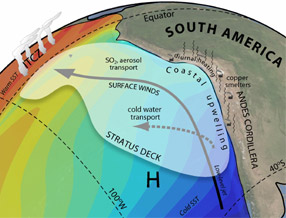
The winds in the Southeast Pacific mainly blow from south to north. They affect the weather and climate in the region. They also affect the climate in other places around the world. Air near the equator
...more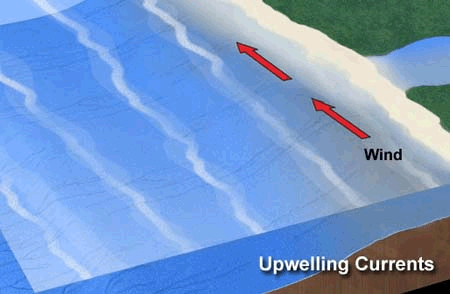
There are places in the ocean where water from the deep sea travels up to the surface. These are called areas of upwelling. The deep waters can have a large influence on marine life and the climate too.
...more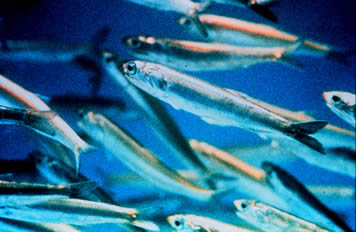
Do you like anchovies on your pizza? Many anchovies come from the Southeast Pacific Ocean near Chile and Peru. In fact, there are lots of different types of fish in this part of the world. Why are there
...more
Have you ever left a glass of water out for a long time? Did you notice that the water disappears after a few days? That's because it evaporated! Evaporation is when water passes from a liquid to a gas.
...more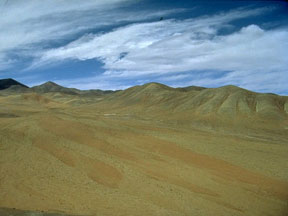
The Atacama Desert is one of the driest places on Earth. The Atacama is in the country of Chile in South America. In an average year, this desert gets less than 1 millimeter (0.04 inch) of rain! It is
...more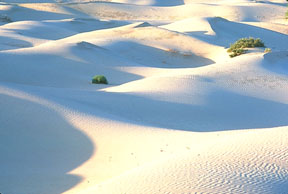
This page describes environments that are very hot or very cold, really dry, or both. It is easy for living creatures to survive and grow in some places. Other places make it tough for life to get by.
...more
When you look up at the sky, you are looking at more than just air. There are also billions of tiny bits of solid and liquid floating in the air. These tiny particles are called aerosols or particulates.
...more














